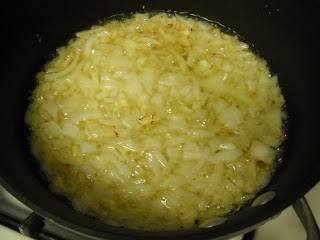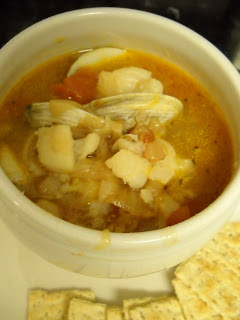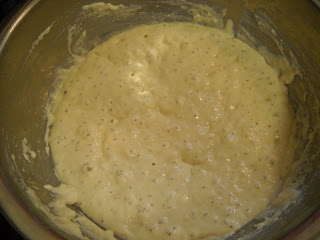I was in Asheville for the long weekend where I ate lots of tasty foods, including a delicious breakfast apple granola crisp made
my fellow food blogger (and friend.) Yum! So, it had been a few days since I'd made anything and my fridge was almost completely empty.
I did a quick grocery run on my lunch yesterday, and was surprised and happy that I didn't need to buy too many things to make these lamb meatballs.
First, toast your pine nuts in olive oil until they are golden brown. Remove them from the pan using a slotted spoon -- you'll still use the rest of the olive oil later in the recipe.
In a bowl, combine the pine nuts, ground lamb (the recipe specifies that the lamb be ground twice, but I couldn't bring myself to ask the Fresh Market guy how many times it had been ground), minced onion, chopped parsley, allspice, cumin, and salt and pepper. It took a little while to mix them all together so that they stuck -- in the past when I've made meatballs there has generally been an egg involved that kind of held everything in.
Form your meatballs and set them aside for half an hour to dry.
Cook the meatballs in the same skillet as before until they are browned on all sides. Remove them from the skillet again and add in chopped tomatoes, tomato concentrate, and some water. Cook these down to a thick sauce and then add in lemon zest and juice. Cook for several more minutes and then add the meatballs back into the sauce to finish cooking.
Side note: after months of searching, I found tomato concentrate in a tube.
These had a lovely sweet-tart flavor and would be nice either as a main course (as we ate them) or as mezze for a party. They fell apart a little bit on the plate, but not so much that it was a problem. I liked the flavors of everything in them, and they had a great texture from the pine nuts and onions. Overall, this recipe was a win.
With the meatballs, I served
Catalan Chickpeas with Tomatoes and Toasted Almonds. I had everything I needed for it except for saffron, but I decided to do without -- it makes for an expensive meal!
This recipe takes a little bit of planning because the chickpeas need to be soaked overnight. I forgot until yesterday morning and then started soaking them before work, to no obviously detrimental effects.
Drain the chickpeas and put them in a pot covered in about an inch of boiling water. Cook the peas for 30 minutes to an hour, until they are tender.
While they are cooking, sauté onion (I used red because that's what I had) in olive oil until it is very soft. Add peeled and finely chopped tomatoes and cook for about 20 minutes, until all the liquid has been absorbed.
Toast the almonds in the oven for 10 to 15 minutes, or until they are golden brown.
Once they are ready, make a paste using the almonds, chopped parsley and garlic cloves, and salt. Pound all these ingredients together (or use your food processor) adding a little of the water from the cooking chickpeas. This mixture will smell amazing.
As soon as the chickpeas are tender, add in the tomato onion sauce as well as the almond paste. Stir well and serve topped with crumbled hard boiled egg.
This was totally delicious and I would definitely make it again. The toasted almonds added a great crunch, and the egg was a nice addition. I'm looking forward to having leftovers for lunch.
lamb -- $2.80
CSA tomato -- $1.05
tomato paste -- $2.99 (lots left)
lemon -- $.89 (used half)
onion -- $.94 (used half)
Total Cost of Lamb Meatballs with Pine Nuts in a Lemony Tomato Sauce: $8.67
almonds -- 1.28
CSA tomato -- $1.05
Total Cost of Chickpeas with Tomatoes and Toasted Almonds: $2.33

























































